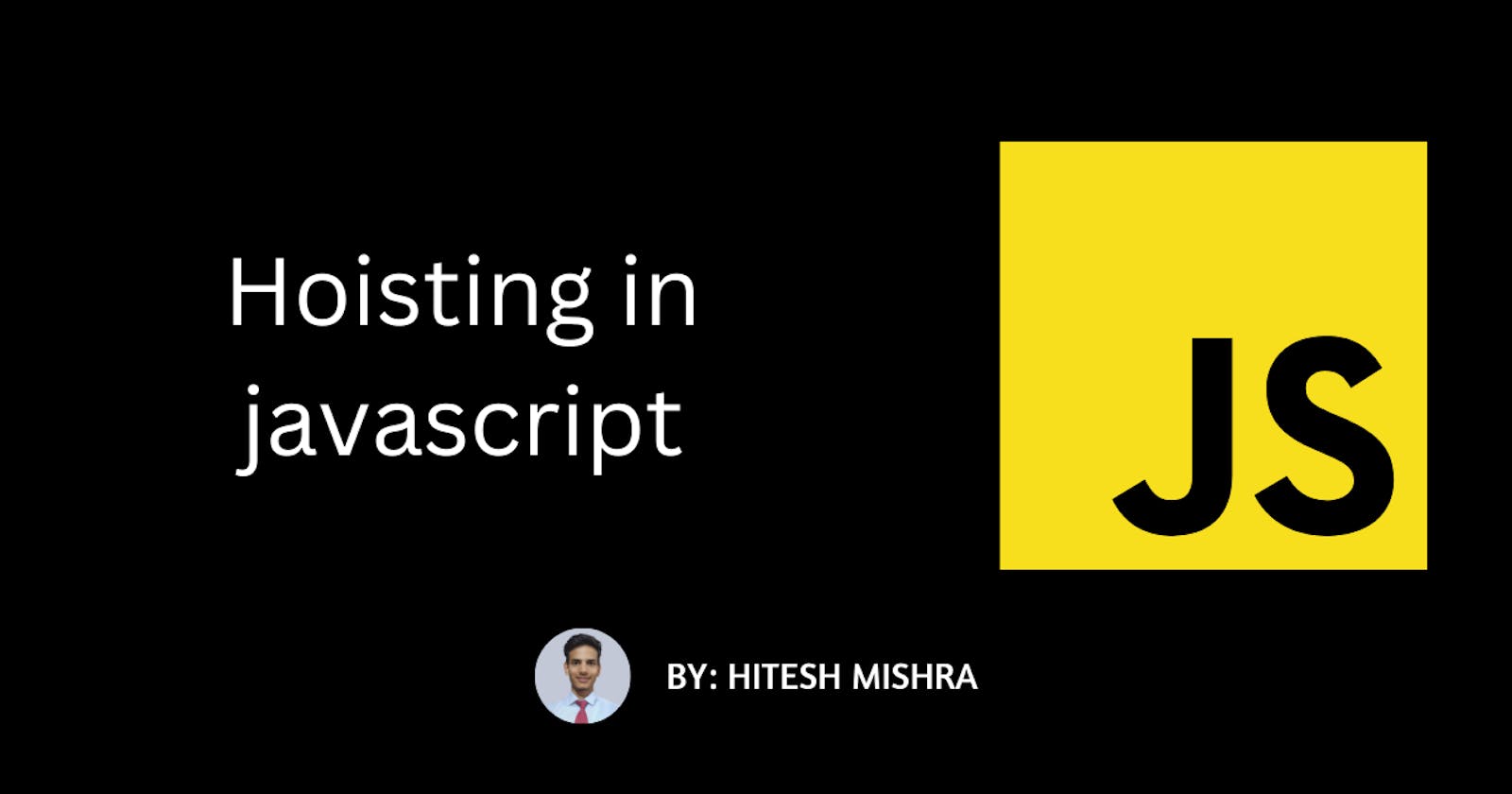Hoisting in javascript
"Understanding Hoisting in JavaScript: Best Practices for Clean and Maintainable Code"
Understanding Hoisting in JavaScript: What it is and How it Works
If you're new to JavaScript, one of the concepts that you'll encounter is hoisting. At its core, hoisting is the way that JavaScript variables and functions are processed during compilation. It can be a bit confusing at first, but understanding how hoisting works is essential to writing efficient and maintainable code.
What is Hoisting?
Hoisting is a behaviour in JavaScript where variable and function declarations are moved to the top of their respective scopes during the compilation phase. This means that regardless of where a variable or function is declared in the code, it will still be available for use.
Here's an example:
console.log(name); // Output: undefined
var name = "John";
In this example, we're trying to log the value of the name variable before it's declared. However, since the variable declaration is hoisted to the top of the scope, the name variable is still available, but its value is undefined.
How Does Hoisting Work?
Hoisting works differently for variables and functions, so let's take a look at each of them separately.
Variable Hoisting
In JavaScript, variables declared with the var keyword are hoisted to the top of their scope. This means that the declaration is processed before any code is executed, regardless of where the declaration appears in the code.
Let's look at an example:
console.log(age); // Output: undefined
var age = 30;
console.log(age); // Output: 30
In this example, the variable age is declared and assigned a value of 30 after the first console.log statement. However, since the declaration is hoisted to the top of the scope, the variable is still available when the first console.log statement is executed, but its value is undefined. The value is only assigned later on when we set it to 30.
Function Hoisting
Function hoisting works similarly to variable hoisting. When a function is declared, its entire definition is hoisted to the top of its scope, regardless of where it appears in the code.
Here's an example:
sayHello(); // Output: "Hello, world!"
function sayHello() {
console.log("Hello, world!");
}
In this example, the sayHello function is defined after it's called. However, since the function definition is hoisted to the top of its scope, the function is still available when it's called.
Hoisting and let/const
console.log(name); // Throws an error: "ReferenceError: name is not defined"
let name = "John";
console.log(name); // Output: "John"
In this example, we're using the let keyword instead of var. Unlike var, let and const are not hoisted, which means that you'll get a ReferenceError if you try to access them before they're declared.
Best Practices for Using Hoisting
While hoisting can be a useful feature in JavaScript, it can also lead to unexpected behaviour if you're not careful. Here are a few best practices for using hoisting effectively:
Declare Variables and Functions at the Top of the Scope
To avoid confusion and ensure that your code is easy to read, it's a good practice to declare all variables and functions at the top of their respective scopes. This way, you can be sure that they'll be hoisted to the top and available for use throughout the scope.
var age;
function sayHello() {
console.log("Hello, world!");
}
age = 30;
sayHello();
Avoid Using var
The var keyword can be a bit confusing, especially when it comes to hoisting. To avoid unexpected behaviour, it's recommended to use let and const instead.
console.log(age); // Throws an error: "ReferenceError: age is not defined"
let age = 30;
console.log(age); // Output: 30
Use Strict
Using strict mode is one of the best practices for hoisting in JavaScript. Strict mode is a feature in JavaScript that enforces stricter rules for your code. It helps to prevent certain types of errors and encourages you to write cleaner, more maintainable code. Here are some reasons why using strict mode is important for hoisting:
1. Prevents Implicit Global Variables
In non-strict mode, if you forget to declare a variable with var, let, or const, the variable will be implicitly created as a global variable. This can lead to unexpected behaviour and hard-to-debug errors, especially in large codebases.
Strict mode prevents the creation of implicit global variables. If you try to assign a value to an undeclared variable in strict mode, you'll get a ReferenceError.
2. Disallows Duplicate Property Names
In non-strict mode, if you define a property with the same name as an existing property on an object, the new property will simply overwrite the existing one.
Strict mode disallows duplicate property names. If you try to define a property with the same name as an existing property on an object, you'll get a SyntaxError.
3. Disallows With Statement
The with statement in JavaScript allows you to execute a block of code with a given object as the scope chain. However, it can lead to unexpected behavior and hard-to-debug errors.
Strict mode disallows the with statement. If you try to use the with statement in strict mode, you'll get a SyntaxError.
By using strict mode in your code, you can avoid these and other potential problems that may arise due to hoisting. This can lead to cleaner, more maintainable code that is less prone to errors.
Conclusion
Hoisting is a powerful feature in JavaScript that allows variables and functions to be declared anywhere in the code while still being available for use. However, it can also lead to unexpected behaviour if you're not careful.
By following best practices and understanding how hoisting works, you can write cleaner, more maintainable code that is less prone to errors. So, the next time you're writing JavaScript code, remember to keep hoisting in mind!
